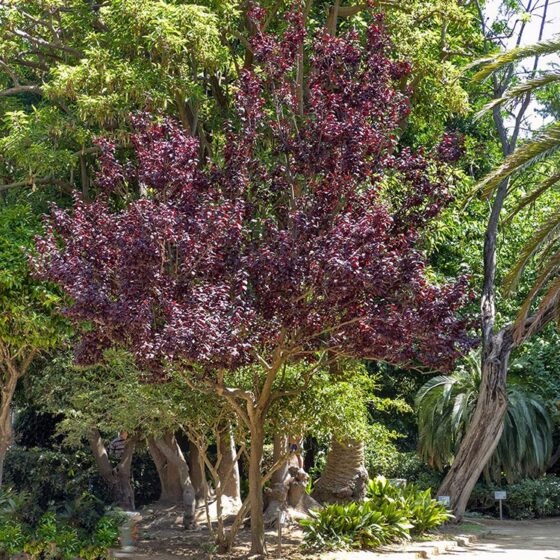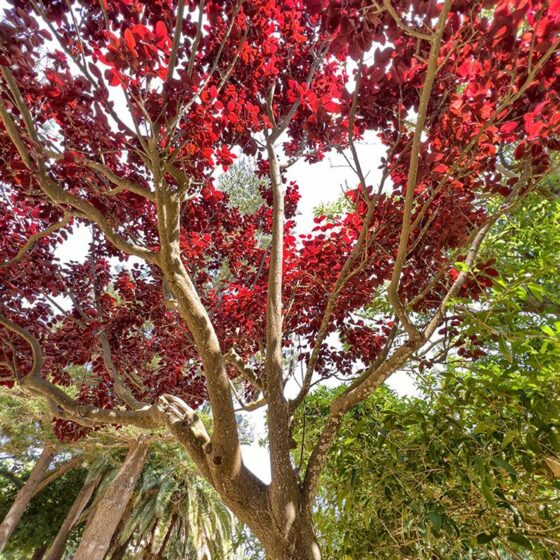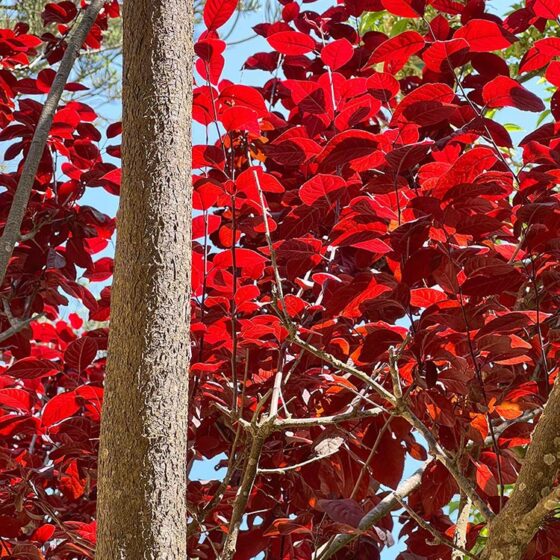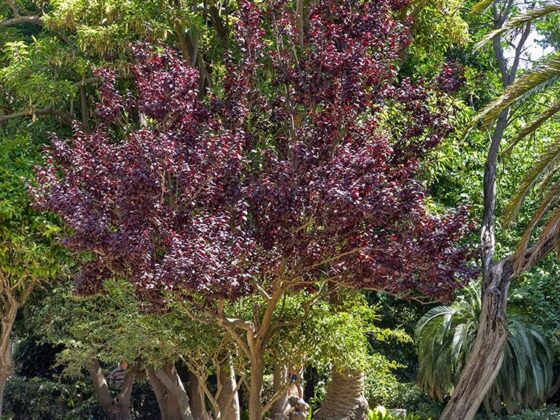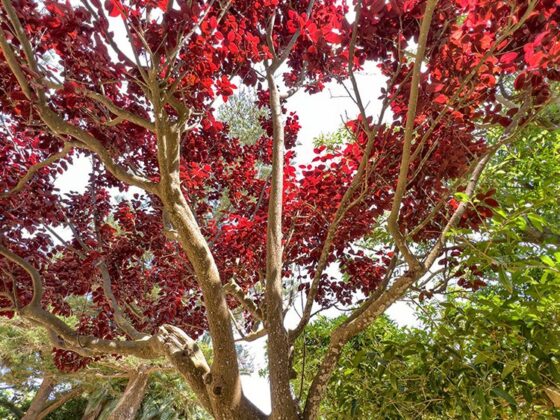Cherry Plum
Prunus cerasifera
The Prunus cerasifera, the Myrobolan plum or the Cherry Plum is a botanical species of the subgenus Prunus native to central and eastern Europe, and southwestern and central Asia.
Cerasifera, epithet derived from Cerasus, cherry and fer = have. It has or produces cherries, alluding to its small plums.
It is a large arboriform shrub, or small tree up to 6-15 m tall, with deciduous leaves measuring 4-6 cm long, with serrated edges, sharp apices, glabrous, except for the central vein on the underside.
It is one of the first European trees to flower in Spring; white or pink flowers, 1.5-2 cm, with five petals. Druped fruit, 2-3 cm in diameter and a yellow or red colour; edible, reaching full ripeness at the beginning of Autumn.
The fruit can be eaten fresh in several ways, as it is sweet and has a good flavour, it is excellent for jams. Others however, can be acidic.
It is a very popular ornamental garden tree, due to its very early flowering. Numerous cultivars have been developed, many for their purplish foliage and pink flowers, such as Prunus cerasifera ‘Pissardii’ and ‘Nigra’. These forms of purple foliage also give dark purple fruits, with which attractive jams are made, which have an intense colour. Others, like ‘Lindsayae’, have pale pink flowers and green foliage.
Monsieur Pissard was a French gardener who, at the end of the 19th century, the Shah of Persia hired as the chief gardener of his gardens. One day, he was working in the gardens of Tabriz Palace, in the north of the country, when he saw that one of the plum trees had a branch with a different colour. It was a branch with a mutation that was evident in the different colour of its leaves, as they had a reddish-purple tone instead of green. M. Pissard, as a good gardener, was curious and cut out the “strange” branch. He found that the tree still had all its reddish leaves. In a word, M. Pissard managed to stabilise a mutation and, a new variety of plum was obtained. In 1880, M. Pissard sent samples of the new “red” variety to one of his colleagues in France, Mr. Paillet, from where his crop was extended to the rest of Europe and other continents.
It is multiplied by seed and by cuttings; and the varieties by grafting. It lives in many climates: both warm and cold. It does well in limey and poor soils, provided they have sufficient moisture.


